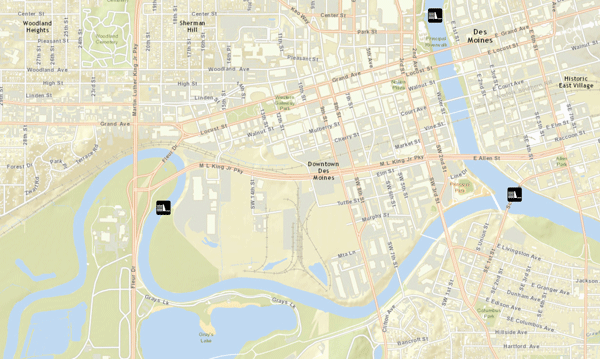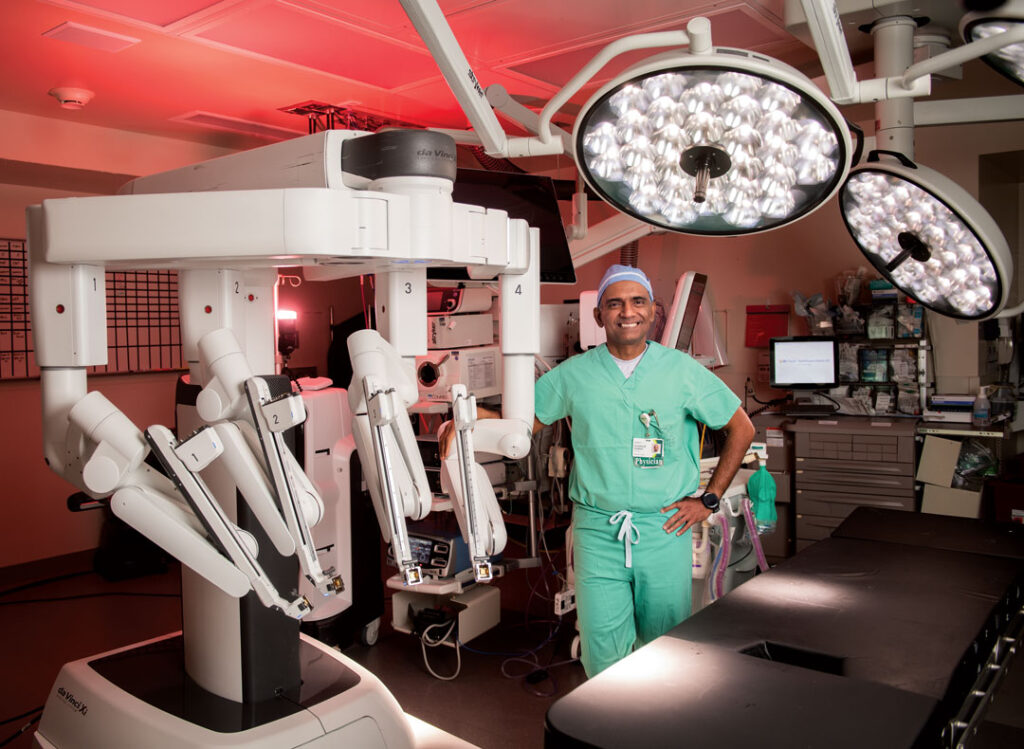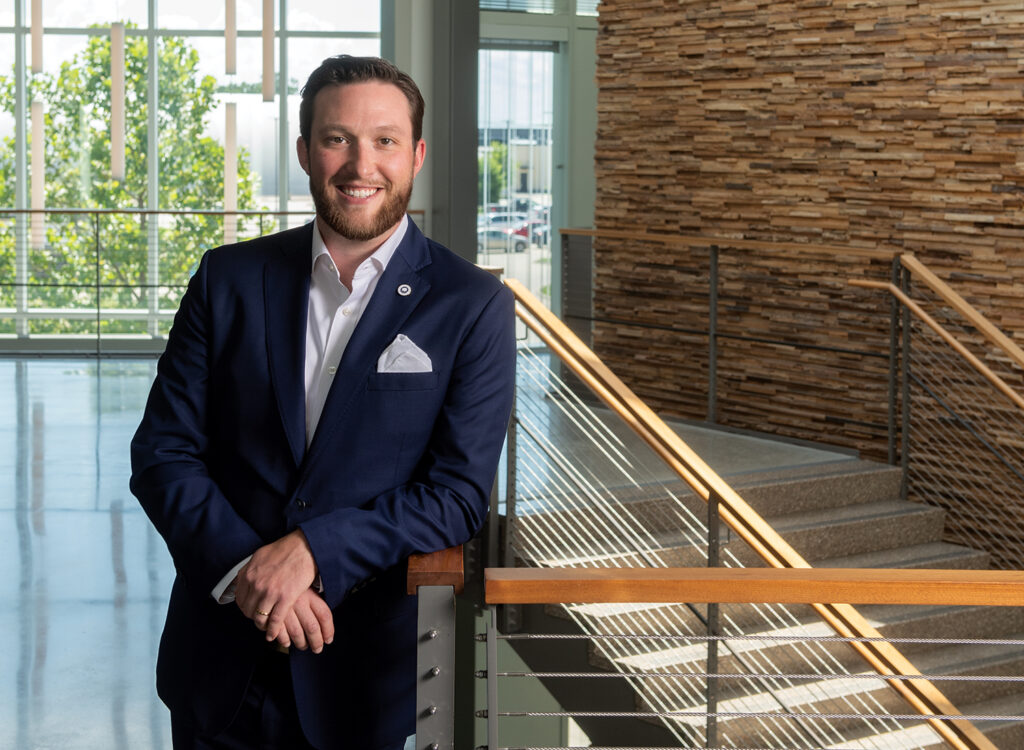Newsmaker Q&A: Head of the waters
Hoogeveen’s DNR team looks to improve dams, or remove them

When I met Nate Hoogeveen years ago, he was a ponytailed kayaker who worked with a range of nonprofits on promoting river cleanups, better access to rivers for paddling, and using outdoor recreation as a way to persuade people to live in Iowa. You’d usually find him in a T-shirt and maybe some hiking pants with zip-off legs.
Along the way, he wrote the definitive guide to canoeing and kayaking here, “Paddling Iowa.” And when Juli Probasco-Sowers and I wrote a major package for The Des Moines Register pointing out that Iowa has a relatively small assortment of public lands, Hoogeveen bemoaned the time it was taking to get more public ramps along rivers. “The pace of this is infuriatingly slow. I think we are in danger of losing our youth,” he said in an interview for that project.
Today, Hoogeveen is in a position to help set the pace for improvements in his job as river programs director at the Iowa Department of Natural Resources. He’s so busy that he only paddles occasionally, and usually with his family, not his friends looking to show each other up with wild kayak tricks. He cut his hair short. And when he showed up at our office for a photo shoot, he was wearing a sport coat. But it was because he had attended a funeral. He assures us he still mostly spurns formal office attire.
And he’s still focused on the rivers. He’s working hard to speed the pace of improvements he only dreamed of back when you had to pry the paddle from his hands if you needed him for another activity.
With serious talk about a makeover for Des Moines Water Works Park and a whitewater course downtown, with continued calls to remove deadly low-head dams around the state — including near Center Street in downtown Des Moines — and with paddle sports steadily gaining in popularity in Iowa, I sat down with Hoogeveen to chat about his work to improve our access to rivers and to help make them safer to use.
What river programs are you working on?
So we have the water trails program. We have the low-head dam mitigation program, where we are working with about a dozen communities that are considering either taking out or replacing their low-head dam with something safer that passes fish. We do the protected water areas program, which is like a scenic rivers program. We work with landowners to protect things like scenic views or wildlife habitat. There are five areas of the state that are under that program.
Anything else?
We do moving water safety — river safety, basically. We put out news releases when conditions aren’t safe. We do brochures for safety. We train county naturalists how to safely take people out with canoes, kayaks and now, paddleboards. The last thing is we are doing river restoration work. That is taking like a concrete-lined channel and making it a more natural stream.
There is a lot of pressure to do more of that work. The Army Corps of Engineers often requires, as part of a permit, that if you damage a stream with your project, you have to fix something somewhere else.
How would you “fix” the river?
Generally you would get an excavator out and bust things up so the river had more meander. The reason it is a discipline is you have to decide how much wiggle that stream should have. What kind of plants should you plant? Do you need rock brought in for certain reasons? Creating stable conditions that mimic nature is the purpose.
It seems like your division has become even more active, right?
Yeah, we are involved in a lot of areas. We are central to a lot of things going on around rivers in Central Iowa. Our water trails and dam program last year got a $1.75 million appropriation. It’s been as much as $2 million and as little as zero some years.
Are the downtown Des Moines dams among the 12 you mentioned?
No. We are doing some preparation work through the (Des Moines Area Metropolitan Planning Organization). There has been a lot of listening surrounding dam issues. Their task is to come up with a plan for all the rivers in the metro area but with emphasis on the downtown area. What do you do to make recreation OK downtown? Unfortunately, killer dams are not the best way to invite the recreational public.
I think there is a lot of realization of that. But that doesn’t mean you just take the dams out. You have other associated infrastructure that goes with it. For example, Des Moines Water Works draws water from the river with the expectation that water going in is at a certain elevation. You have rowers using the river. We’ve heard all that. Pam Cooksey, the city engineer, did a review of things that could be affected if the dams were not there. Bridge piers for example.
Aren’t the dams the center of this debate?
It’s sort of the 900-pound gorilla in that it’s really hard to deal with a water trail in downtown Des Moines until you deal with the dams. Fortunately, we have examples of communities around the state that have addressed these problems with everything from straight removal (of the dams) to building rapids that break up the recirculating hydraulic.
You can in effect build a dam that really is a rapids but serves the same purpose, right?
Yes. When communities are really wanting to make the river a showpiece, there are other things you can do. You can create structures for fishing habitat, for example. You can, like Charles City, Manchester and Elkader, replace a dam with whitewater features. They have really cool bank access, where people can move around and get down to the water’s edge easily.
Is the Center Street dam in Des Moines the state’s most deadly?
You could make the case for that. Because it’s in the city where The Des Moines Register is located, the deaths may just be more documented. As far as our records go, I believe we are up to 12 deaths now. We have other dams that have approached that number. Littleton dam had nine deaths. That one is in a rural area. Maybe it’s more inherently dangerous. It’s hard to call one more dangerous than another one.
Wherever there is this type of dam, death is a probability (because people get trapped in the churning waters below the dam).
What are your top goals when you work with a community?
We need to mitigate the hazards. And we need to get fish passage at these dams. That’s a significant issue. The fragmentation of these river systems is profound because of these dams. We would have more fish, and diversity of fish, and also more diversity and numbers of threatened and endangered mussel species, if we had fish passage. There is federal money that comes along with those projects, so we work with the U.S. Fish and Wildlife Service, and that benefits the community. How can mussels ever recolonize if the fish can’t carry them upstream?
Are there other factors you look for in the community projects?
We can look at all kinds of other goals, like good access to the river, recreation, infrastructure that needs to be shored up …
Where do you think the whitewater discussion is in Des Moines?
I think it’s a little early to say. There was a plan in ‘04. But there is broad agreement that that plan doesn’t work. It was for the Center Street dam or Scott Street dam. It had a whitewater course at Scott, and Center Street would have been treated for safety.
Why doesn’t that work?
Because where they were going to put the whitewater course is now the location of a major new sewer pipe. So it physically doesn’t work anymore.
Wasn’t there some thought that Center Street would be a better location for whitewater?
There are a lot of possibilities at Center Street. One of the great parts of that area is that just upstream this community has closed down a road. There is some space to work with. Downstream of it, you just don’t have space. If you were working upstream, it could be more of a river restoration kind of thing. It could be a whitewater kind of thing, it could be fishing habitat, all of the above. All of those things have been requested.
Would there be changes on land?
If you are changing the dam, there often are reasons to change the bank. Like Charles City, for example. They built all these trails and there are lots of ways down to the water and there are trails, and then there are structures for fish habitat. So there is good access and good fishing.
Are any other issues in play in Des Moines?
Des Moines had some issues about a year and a half ago with angling. They wanted to ban angling off the bridges and the trails. Angling is a big deal here. It’s a legitimate form of recreation. So giving people places to throw away their bait or trash and having fish-cleaning stations in some strategically located spots is something you might see out of this plan, too. The whitewater thing is a big potential that could be a big draw for economic development if that is what’s settled on. It’s also a big investment.
Do you have drawings of what likely will be built?
No. We’re trying to come up with three conceptual drawings of what downtown Des Moines could look like under some scenarios. One would be more natural. One would be a more urban look, as it has now. And one might be somewhere in between. It’s all conceptual. It’s not a design.
What is this going to cost?
The 2004 plan was for $40 million to $45 million. This project, if you go in the whitewater direction, I would not expect it to be cheap by any means. You are talking more than $10 million in a city like this, hopefully somewhere south of $40 million.
Seeing some of these urban dams mitigated is a real goal for us. But it’s not our dam. In Des Moines, they are the city’s (on the Des Moines River). There is another one the Raccoon River owned by Des Moines Water Works. We’ve talked to them too.
Are there plans for the Raccoon River?
As part of the Water Works Park master plan, there would be new access. Then you have this whole stretch down to the Scott Street dam that just doesn’t get used at all right now. There is no access to it. From the public feedback, along with some analysis, it looks like the Raccoon River from Water Works Park to the confluence (of the Des Moines and Raccoon rivers), if you were looking at it from a scenario of no dams or mitigated dams, could be a tremendously popular recreation area. It would be very visible and would change the character of downtown. Gray’s Lake doesn’t have access to the Raccoon River, but it could.
How does this project come together?
There is no way this project is going to be about just a few kayakers. We’ve gotten smarter in terms of realizing that there are all these people who use the river and love the river. They all need to be consulted, and they need to be part of the vision. Then you have a real project that has legs under it.
Downtown dam locations
The Center Street (north) and Scott Street dams on the Des Moines River and a utility dam on the Raccoon River could be removed as part of a push for safety and better recreation.
Submitted by Des Moines Area Metropolitan Planning Organization











